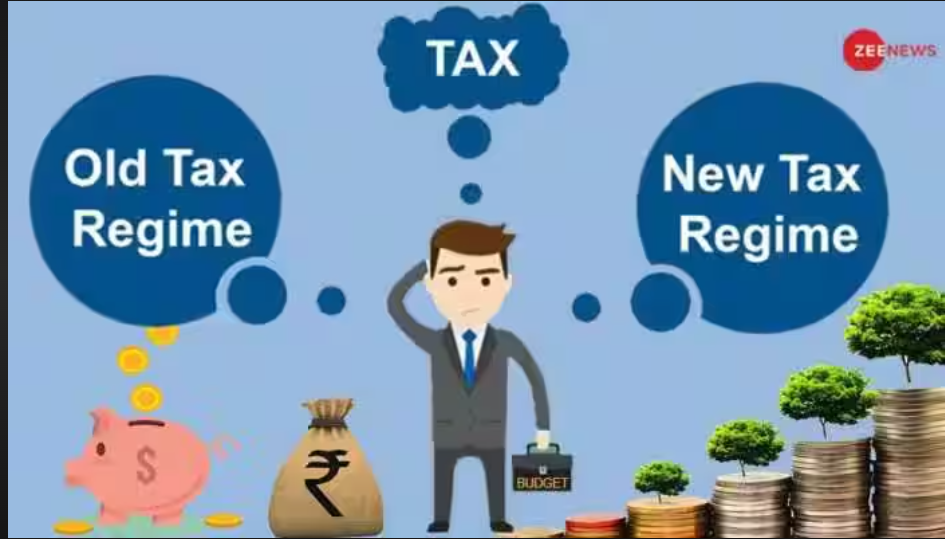The government’s new tax regime, marketed as a “simpler and cleaner” alternative to India’s old tax system, may be hiding a costly surprise for unsuspecting taxpayers. Chartered Accountant Nitin Kaushik has issued a strong caution, warning that a hasty switch could cost individuals anywhere between ₹2 lakh to ₹3 lakh annually in lost tax savings
In a detailed advisory shared on X (formerly Twitter), Kaushik dismantled the perception that “simplicity” automatically means “better” when it comes to personal finance. “Simplicity shouldn’t cost you peace of mind or your money,” he wrote, urging taxpayers to do a thorough cost-benefit analysis before opting in.
What You Lose Under the New Regime
Kaushik points out that the new regime removes many popular tax exemptions and deductions that help individuals legally reduce their tax burden under the old system. These include:
-
Section 80C: Up to ₹1.5 lakh (LIC, ELSS, PPF, home loan principal, and other investments)
-
80CCD(1B): ₹50,000 (additional NPS contribution)
-
80D: ₹25,000 to ₹1 lakh (health insurance premiums)
-
80E: Interest on education loans (no upper limit)
-
80EEB: ₹1.5 lakh (interest on electric vehicle loans)
-
80G: Donations to eligible institutions
-
80TTA/80TTB: ₹10,000–₹50,000 (interest on savings accounts)
-
HRA exemption, LTA, home loan interest deduction, professional tax and several other benefits
-
For many middle-class and upper-middle-class households, these deductions form the backbone of their annual tax planning strategy.
What You Still Get
While the new regime wipes out several tax-saving opportunities, a handful of exemptions remain, including:
-
₹50,000 standard deduction for salaried individuals and pensioners
-
Employer’s NPS contribution under Section 80CCD(2)
-
Gratuity exemption up to ₹20 lakh
-
Leave encashment, commuted pension, and certain retirement benefits
However, Kaushik stresses that these remaining benefits are far fewer compared to what the old regime offers.
The Real Cost: An Example
To illustrate the impact, Kaushik provides a practical scenario for someone in the 30% tax bracket:
-
Total exemptions in the old regime: ₹6.6 lakh
-
Tax saved annually: ₹1.98 lakh
-
With additional deductions such as EV loan interest or senior citizen health premiums, the savings can jump to ₹2.4 lakh–₹3 lakh a year.
This means that for taxpayers who actively invest, own a home, or use available deductions, switching to the new regime could be equivalent to voluntarily giving up lakhs in tax savings every year.
Who Might Benefit From the New Regime?
Kaushik acknowledges that the new regime isn’t bad for everyone. In fact, certain groups may gain from it:
-
Young earners with minimal or no tax-saving investments
-
High-income individuals without home loans, education loans, or significant deductions
-
People who prefer minimal documentation and don’t want to track exemptions
For these categories, the cleaner slab structure of the new regime may offer convenience and slightly lower rates.
Who Should Think Twice?
For the majority of salaried professionals, families with home loans, and investors who make use of deductions, the old regime remains substantially more rewarding.
Kaushik’s message is clear: Don’t be swayed by the buzz around “simplification” without crunching the numbers. “Do the math. Choose what fits your situation — not what’s trending,” he says.
The Bigger Picture
The government introduced the new regime to encourage a simpler, exemption-free tax system. While it has its advantages, the trade-off for many is the loss of long-standing deductions that promote savings, insurance coverage, education financing, and charitable giving.
Personal finance experts believe the best approach is to compare both regimes side-by-side each financial year. Taxpayers are allowed to choose their preferred system annually, giving them the flexibility to switch if circumstances change.
Bottom Line:
The new tax regime may look cleaner and easier to follow, but for those with significant deductions, it can silently erode lakhs in annual savings. Before making the switch, take Kaushik’s advice — do the math, assess your benefits, and don’t trade smart planning for short-term convenience. -
